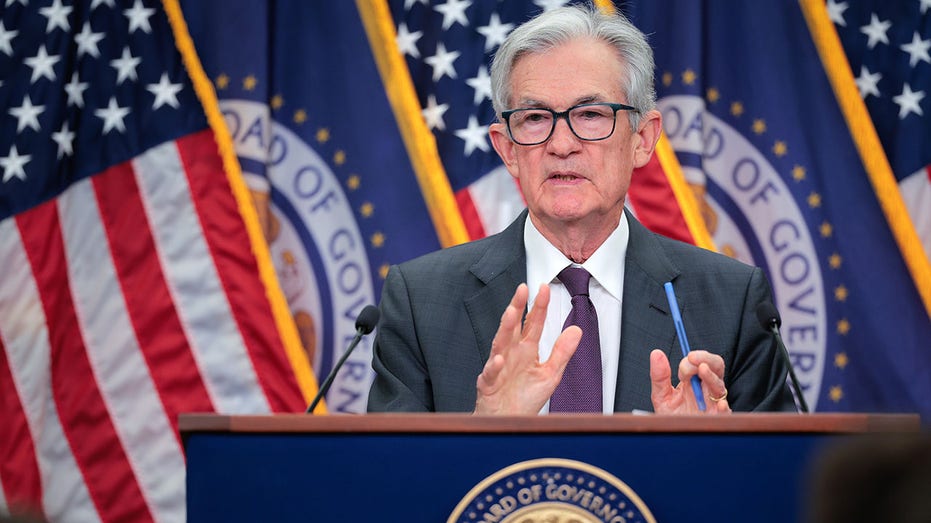Former Kansas City Federal Reserve President and CEO Thomas Hoenig joins Mornings with Maria to discuss Federal Reserve Chair Jerome Powell’s speech at the Jackson Hole Economic Symposium.
The Federal Reserve’s preferred inflation gauge showed that inflationary pressures remained elevated in July, as the central bank mulls an interest rate cut at its meeting next month.
The Commerce Department on Friday reported that the personal consumption expenditures (PCE) index rose 0.2% from a month ago in July and remained at 2.6% on a year-over-year basis, in line with the expectations of economists polled by LSEG.
Core PCE, which excludes volatile food and energy prices, was up 0.3% on a monthly basis and 2.9% from a year ago, both in line with economists’ estimates.
Federal Reserve policymakers are focusing on the PCE headline figure as they try to bring inflation back to their long-run target of 2%, though they view core data as a better indicator of inflation. Headline PCE remained flat at 2.6% in July from the prior month, while core PCE ticked up from 2.8% to 2.9% – the highest level since February.
FED CHAIR JEROME POWELL SIGNALS JOB MARKET, INFLATION OUTLOOK COULD ALLOW FOR INTEREST RATE CUT
Prices for goods were up 0.5% in July from the same month a year ago, with durable goods prices up 1.1% and nondurable goods up just 0.2%.
Services prices were 3.6% higher in July when compared with last year, up slightly from the 3.5% reading in June.
Wages and salaries rose 0.6% in July from the prior month, which comes as a rebound after June saw a 0.1% increase that was the slowest monthly growth since at least November.
The personal savings rate as a percentage of disposable personal income was 4.4%, unchanged from the prior month.
FED MINUTES SHOW INFLATION FEARS OUTWEIGHED JOBS MARKET IN JULY RATE DECISION

The PCE report shows inflation remains well above the Fed’s 2% target. (Howard Schnapp/Newsday RM via Getty Images / Getty Images)
The Commerce Department’s PCE report comes as the Federal Reserve is monitoring inflation data for signs of inflation rising as a result of the Trump administration’s tariffs as it mulls potential interest rate cuts as soon as their next monetary policy meeting in mid-September.
Fed Chair Jerome Powell opened the door to a potential rate cut in his speech at the central bank’s annual conference in Jackson Hole last week, noting that the labor market is in “a curious kind of balance that results from a marked slowing in both the supply of and demand for workers.”
While he noted that downside risks to employment are rising, upside inflation risk continues to pose a challenge. Powell explained that the “effects of tariffs on consumer prices are now clearly visible,” explaining that there is uncertainty over whether those price increases are likely to “materially raise the risk of an ongoing inflation problem.”
Powell said while it’s possible the tariff-induced price hikes will be short-lived and represent a one-time shift in the price level, the upward pressure on prices from tariffs could create a more lasting inflation dynamic.
PRODUCER PRICES SURGED MORE THAN EXPECTED IN JULY, SPURRING INFLATION CONCERNS

Fed Chair Jerome Powell said that the weakening labor market could open the door to rate cuts, though he warned of uncertainty over the impact of tariffs on inflation. (Chip Somodevilla/Getty Images / Getty Images)
Fed policymakers are weighing the risks on both sides of their dual mandate to promote maximum employment and stable prices in line with the central bank’s 2% long-run inflation target.
The weak July jobs report boosted the outlook for a September rate cut in the eyes of the market, while fresh labor market data is due out next week.
“The Fed opened the door to rate cuts, but the size of that opening is going to depend on whether labor-market weakness continues to look like a bigger risk than rising inflation,” said Ellen Zentner, chief economic strategist at Morgan Stanley Wealth Management. “Today’s in-line PCE Price Index will keep the focus on the jobs market. For now, the odds still favor a September cut.”
GET FOX BUSINESS ON THE GO BY CLICKING HERE
Bret Kenwell, U.S. investment analyst at eToro, said that the “good news” is that PCE inflation being in-line with expectations will “likely keep the status quo intact, which leaves a Fed rate cut in play for September. The bad news is, inflation is continuing to inch higher, which isn’t really the environment the Fed likely wants to cut in.”
“Inflation rose across the board, with both goods and services ticking higher. While the Fed will likely cut rates to accommodate the labor market, it may be hard for them to move as quickly or aggressively as they’d like with inflation moving higher,” Kenwell added.
The market viewed the PCE inflation report as slightly increasing the odds of a September rate cut from the current federal funds target range of 4.25% to 4.5%. The probability of a 25-basis-point cut rose from 86.7% a day ago to 87.2% on Friday following the release, according to the CME FedWatch tool.
#July #PCE #Feds #favored #inflation #gauge #remained #elevated